3D Scanning for Historical Preservation and Fine Art
Functional 3D is a 3D Scanning Service Provider for curators, art handlers and preservationists of artworks and historical artifacts. By utilizing advanced scanning technology, intricate details and textures of artworks can be captured for documentation and analysis. This technology also enables the creation of digital archives, ensuring the preservation of cultural heritage for future generations. Moreover, detailed digital models facilitate accurate restoration and replication of fragile and valuable artifacts. The non-invasive nature of 3D scanning ensures minimal risk to delicate artworks and historical objects.
Contact us today to schedule a call
Applications of 3D Scanning in
Art and Historical Preservation
3D Scanning for Custom Packaging
3D Scanning for Archival Documentation
3D Scanning to Create Interactive Digital Twins: Reproducing Sculptures and Historical Artifacts
3D Scanning to Rescale Sculptural Models for Production
3D Scanning to Reproduce Existing Artworks
3D Scanning for Architectural Restoration
3D Scanning Artwork for Custom Packaging
Art Handlers and Art Transport Services use 3D scanning to create custom packaging solutions for fine art and objects of historical significance. Scanning technology accurately captures product dimensions and shapes, enabling precisely customized packaging that perfectly fits objects with complex curvatures. Scan data can be used to plan transport and installation of large scale sculptures.
Temporary Mural Project Preserved Using Photogrammetry and Lidar Scanning
3D Scanning to Create Interactive Digital Twins: Reproducing Sculptures and Historical Artifacts
With the help of 3D scanning, it is possible to generate highly detailed digital replicas of sculptures and historical artifacts. These replicas can then be transformed into interactive digital twins that offer a virtual exploration experience. By creating digital representations, accessibility to these sculptures and artifacts is enhanced, allowing individuals from around the world to appreciate and study them.
Additionally, 3D scanning technology enables a detailed analysis of intricate details that may not be easily observable with the naked eye. This technology also allows for the reproduction of sculptures and artifacts in various sizes and materials, further expanding their reach and impact.
3D Scanning to Reproduce Existing Artworks
Reproducing existing artworks with utmost precision and accuracy is made possible through the advanced technology of 3D scanning. By utilizing 3D scanning techniques, intricate details and textures of artworks can be captured with exceptional clarity. This allows for the creation of replicas that maintain the originality and integrity of the artwork. Whether for exhibition or sale, 3D scanning ensures consistency and quality in the reproduction process. With precise 3D scanning techniques, artists and collectors can preserve and share their favorite pieces with the world.
3D Scanning for Archival Documentation
Preserving historical artifacts is made possible with the aid of 3D scanning technology. Through highly accurate measurements and detailed documentation, this technology allows for the creation of digital replicas that ensure long-term preservation. Moreover, 3D scanning can be utilized to develop virtual exhibits and interactive platforms for educational purposes, offering a novel way to engage with historical items. Additionally, researchers and scholars can benefit from using 3D scanning to create accurate replicas for in-depth study and analysis.
3D Scanning to Rescale Sculptural Models for Production
Accurately scaling sculptural models for production purposes is made possible through the use of 3D scanning technology. By scanning and resizing models, precise proportions and dimensions can be ensured, enhancing efficiency and accuracy in the production process. This enables the creation of scaled replicas of sculptural models for various applications. With 3D scanning, easy replication and production of these models becomes achievable. By utilizing 3D scanning, the rescaling of sculptural models for production is made convenient and efficient.
3D Scanning for Architectural Restoration
To ensure the accuracy and efficiency of architectural restoration projects, 3D scanning technology is extensively utilized. By utilizing 3D scanning, architectural structures can be thoroughly documented and assessed for restoration purposes. Detailed digital models of buildings and structures are created through 3D scanning, allowing for in-depth analysis and planning. The restoration process is further enhanced by accurately referencing 3D scan data, enabling precise restoration of architectural elements. Moreover, 3D scanning is instrumental in capturing intricate architectural details and features, ensuring the preservation and restoration of historical structures.
Case Study: Architectural Restoration
Utilizing 3D scanning technology, historical buildings can be accurately documented and analyzed for restoration projects. Digital models of architectural structures are created to aid in the restoration process, preserving the architectural heritage by reproducing damaged or deteriorated elements with precision. With 3D scanning, precise measurements and assessments can be made, leading to efficient restoration. This technology enhances the authenticity and accuracy of architectural restoration, ensuring the preservation of our rich history.
Conclusion
The applications of 3D scanning in film, entertainment, fine art, and historical preservation are vast and diverse. From creating digital props and set extensions using structured light and photogrammetry to preserving and reproducing historical artifacts through 3D scanning and interactive digital twins, this technology has revolutionized these industries. It enables filmmakers and artists to bring their visions to life with precision and accuracy, while also preserving and documenting valuable cultural heritage. Whether it's for creating realistic visual effects in films or restoring architectural masterpieces, 3D scanning offers endless possibilities. If you're interested in exploring the potential of 3D scanning for your projects, contact us at Functional 3D to discover our comprehensive scanning services.








